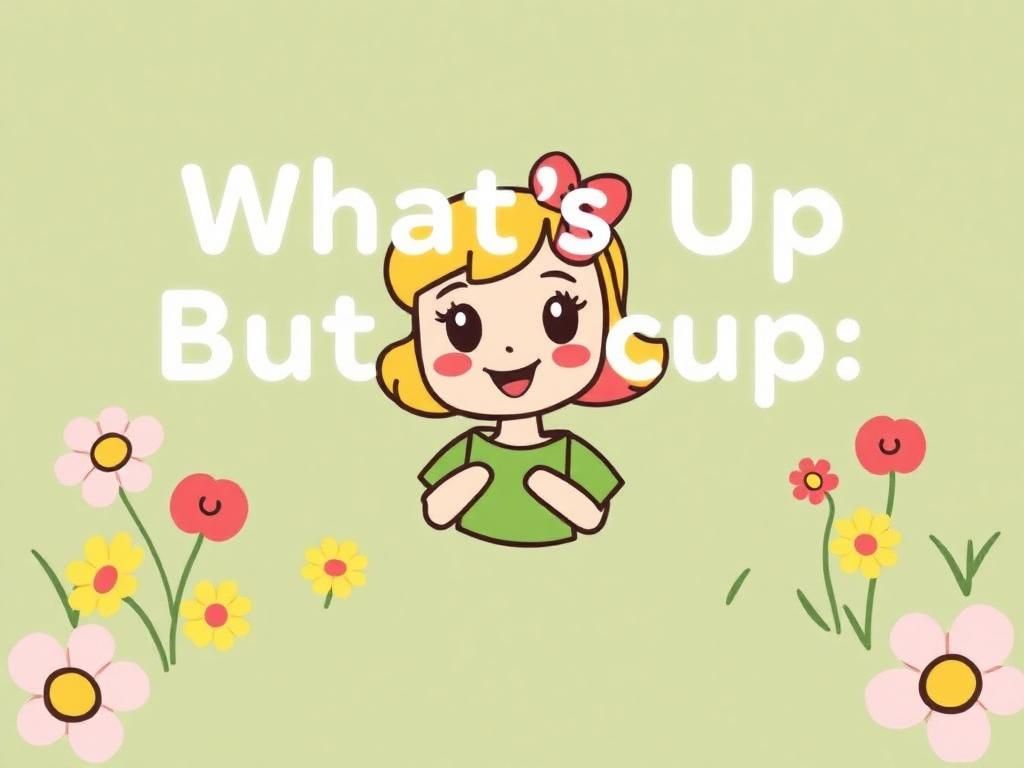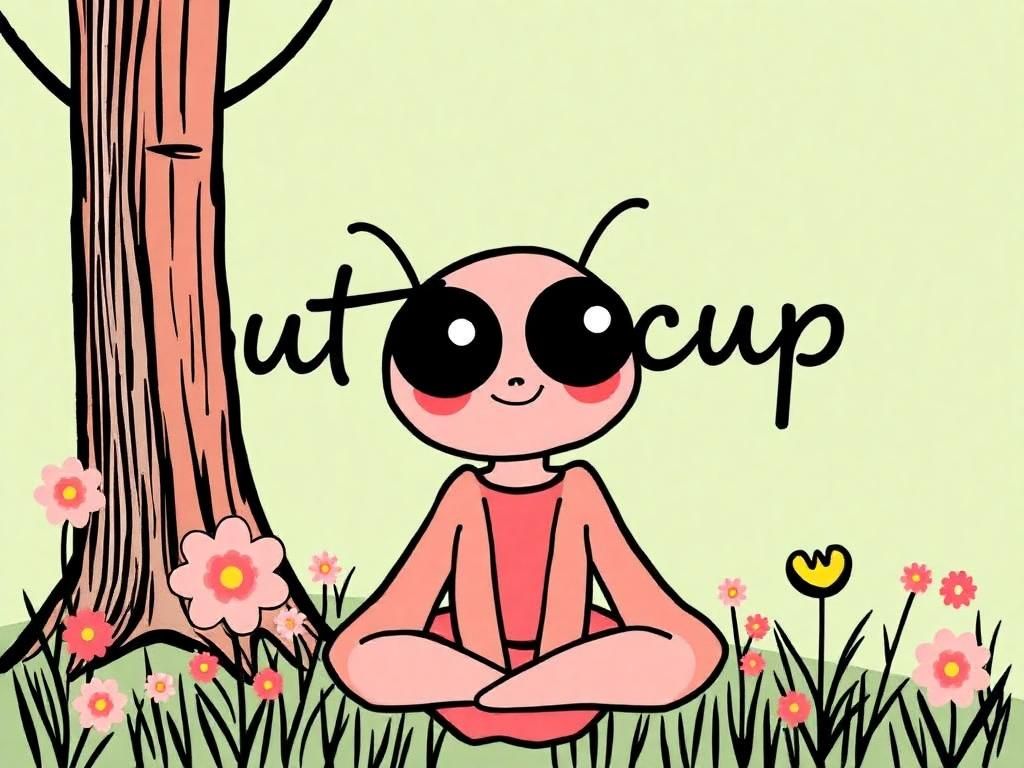The phrase “What’s up buttercup?” is a delightful, informal greeting that evokes a sense of warmth and familiarity. Its origin traces back to friendly exchanges in the 20th century, often used to show affection or playful banter. Today, you’ll find this phrase in casual conversations among friends, families, and even acquaintances on social media, making it a beloved component of modern vernacular. However, what you say in response can greatly enhance communication effectiveness and set the conversational tone. A thoughtful reply not only showcases your personality but can also strengthen your social bonds.
Understanding the Context
Types of Contexts for the Phrase
Understanding the context in which “What’s up buttercup?” is asked is crucial for crafting the right reply. This phrase can be used in various situations, including:
- Casual Friendships: Among friends, it’s typically light-hearted and fun.
- Romantic Relationships: Here, it may carry a touch of affection and intimacy.
- Professional Interactions: Used in a more formal setting, it can feel unusual but fun if contextually appropriate.
- Social Media Interactions: Often, it’s typed out in a friendly way to keep conversations engaging online.
The Tone of the Inquiry
The tone of the phrase can vary widely, and recognizing it helps tailor your response:
- Playful or Humorous: Indicates a light atmosphere where a witty response may shine.
- Concerned or Caring: Suggests an opportunity for a sincere answer, as the asker may genuinely want to know how you’re feeling.
- Neutral or Formal: In more serious environments, a simple response might be best.
Crafting the Perfect Reply
Factors to Consider
When formulating your reply to “What’s up buttercup?“, consider several crucial factors:
- Audience: Determine who is asking and your relationship with them—are they a close friend, a colleague, or a romantic partner?
- Mood: Assess your own mood—are you feeling playful, serious, or indifferent?
- Setting: Consider where this conversation is taking place—face-to-face, via text, or on social media.
Possible Types of Replies
Playful Responses
Playful replies can spark joy and laughter:
- “Just hanging out like a cheap suit!”
- “Not much, just plotting world domination!”
The benefits of playful replies include strengthening bonds and encouraging a lighthearted conversation that keeps interactions entertaining.
Witty Replies
Witty replies can reflect your creativity and humor:
- “Oh, you know, just saving the world one cup of tea at a time!”
- “Busy writing my novel—one chapter at a time!”
Using wit can showcase your personality and keep conversations engaging, making your interactions memorable.
Simple and Direct Replies
Sometimes, the best response is straightforward:
- “Not much, what about you?”
- “Just the usual, how’s your day going?”
Advantages of simplicity include clarity and ease, allowing for a natural flow in conversation without effort.
Reflective Replies
Reflective replies can invite deeper discussions:
- “Just thinking about life—what’s on your mind?”
- “Trying to figure out what to do next!”
This type of response is excellent for creating meaningful connections and sharing feelings, encouraging a richer conversation.
Situational Responses
For a Serious Context
In more serious situations, consider replies that reflect your state:
- “Just been dealing with some things; appreciate you asking.”
- “Feeling a bit overwhelmed, but I’m hanging in there.”
For a Fun Context
Conversely, in a fun context, lighter responses work well:
- “Just daydreaming about the weekend!”
- “Trying to figure out what snack to eat next!”
Cultural Variations
Regional Dialects and Alternatives
Different cultures have their unique phrases that convey the same friendly inquiry. Understanding these variations can be valuable, especially if you’re interacting with diverse social groups:
- North America: “How’s it going?”
- UK: “What’s happening?”
- Australia: “How’s it hanging?”
Adapting your reply based on cultural understanding ensures that your response is well-received and promotes friendly communication.
Conclusion
In summary, crafting a suitable response to “What’s up buttercup?” is not just about answering a question—it’s about enhancing interpersonal communication, showcasing your personality, and engaging authentically with others. Remember to be creative and authentic in your replies, as this will further enrich the conversation. Ultimately, a thoughtful reply can help lay the groundwork for increased connections and enjoyable interactions.
FAQ Section
What is the best way to reply to “What’s up buttercup?”
The best reply depends on your mood and relationship with the asker but playful or witty responses are often appreciated.

Can I use “What’s up buttercup?” in a professional setting?
While it may not be typical, if the atmosphere is friendly, it can add a touching personal note.
How can I tailor my response if I am not feeling well?
It’s perfectly fine to be honest—replies such as “Just trying to get through the day, thanks for asking!” work well.
What if I’m talking to someone from a different culture?
Adapt your phrasing based on their familiarity with the idiom or opt for a more universal greeting when needed.
Are there specific replies that should be avoided?
Generally, avoid overly negative or sarcastic comments, especially if the conversation is meant to be light-hearted.
How can I engage further after a playful response?
Follow up your reply with a question of your own to keep the conversation flowing, such as asking how their day is going.
Table: Summary of Reply Options
| Reply Type | Examples | When to Use | Benefits |
|---|---|---|---|
| Playful | “Just plotting world domination!” | Casual contexts | Lightens the mood |
| Witty | “Saving the world one cup of tea at a time!” | Friendly acquaintances | Showcases personality |
| Simple & Direct | “Not much, what about you?” | Any context | Clarity and ease |
| Reflective | “Just thinking about life—what’s on your mind?” | Deep conversations | Encourages sharing |
| Serious | “Feeling a bit overwhelmed, but I’m hanging in there.” | When dealing with challenges | Opens up discussions |
| Fun | “Just daydreaming about the weekend!” | Casual, light-hearted settings | Creates joy |
By considering the context, mood, and your relationship with the person who asked, you can improve communication and keep conversations lively. The key is to practice and build a repertoire of responses you can draw from!
We invite you to share your favorite replies or experiences related to “What’s up buttercup?” in the comments! Engage in this lighthearted exchange to enhance your conversational skills further.

